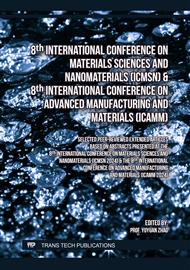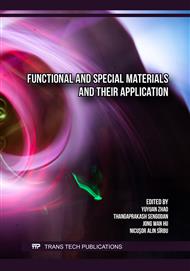p.9
p.15
p.21
p.27
p.37
p.43
p.49
p.59
p.67
A Study on NbN Thin Films as Resistive Films Prepared via Reactive Magnetron Sputtering
Abstract:
The NbN thin films were deposited onto glass and Al2O3 substrates using reactive magnetron sputtering, employing a niobium target sputtered with a mixture of Ar and N2 gases. The investigation focused on the phase structures, microstructures, and electrical properties of the NbN thin films under various deposition powers and annealing temperatures. The results indicated the presence of a face-centered cubic (FCC) crystal structure in the as-deposited films at a power of 125 W. Interestingly, the crystallization phase remained unchanged within an annealing temperature range from room temperature to 500 °C. It was observed that the resistivity of the NbN thin films increased with higher nitrogen content, while the temperature coefficient of resistance (TCR) showed a tendency towards more negative values as the nitrogen content rose. Notably, at a nitrogen content of 9%, the film exhibited the lowest resistivity of 273 μΩ-cm with a TCR of -240 ppm/°C.
Info:
Periodical:
Pages:
37-42
Citation:
Online since:
December 2024
Authors:
Keywords:
Price:
Сopyright:
© 2024 Trans Tech Publications Ltd. All Rights Reserved
Share:
Citation:



